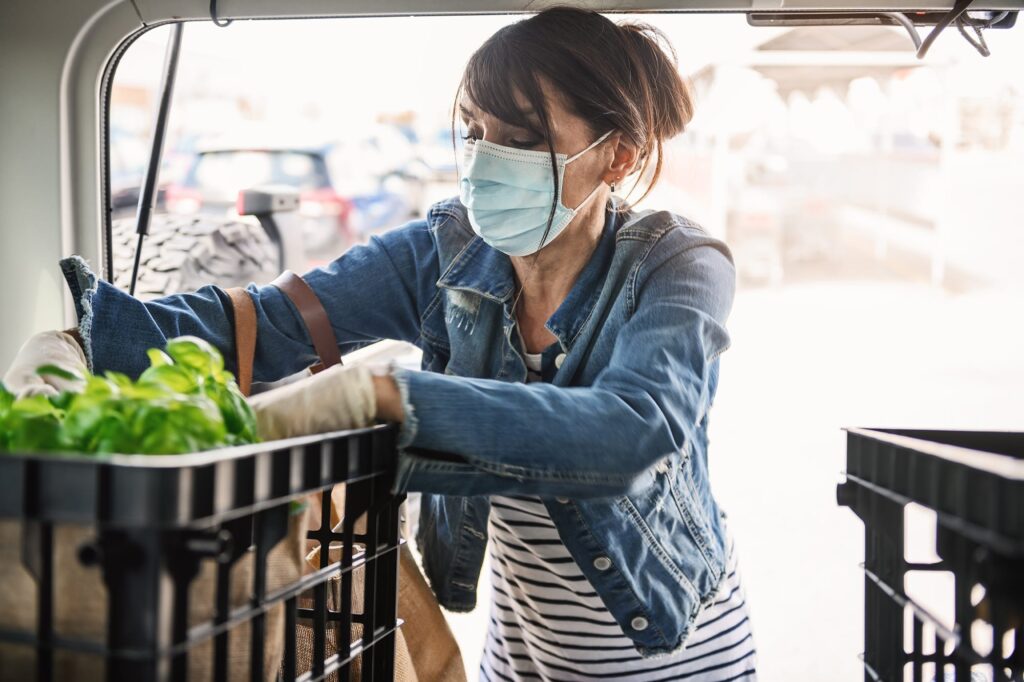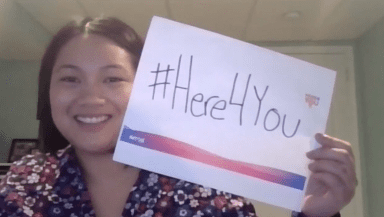
Dr. Terry McInnis, a board-certified physician in preventive medicine and president of Blue Thorn Inc., shares what the healthcare industry knows and is continuing to learn about the novel coronavirus, plus how she thinks the COVID-19 pandemic will change healthcare as we know it.
By Terry McInnis, MD, MPH, CPE, President, Blue Thorn Inc., and member of the Medecision Corporate Advisory Board
It’s been almost four months since the first confirmed case of the novel coronavirus (COVID-19) was confirmed in the United States. Now, there are more than 1 million cases confirmed in the United States, and more than 3.2 million cases confirmed worldwide.
What We Know About COVID-19
The most common symptoms are a dry cough, shortness of breath, fatigue and fever. In April, however, we learned that another common symptom was a temporary loss of taste or smell—in fact, after polling a large number of people who tested positive, 60% of people reported this symptom. Some people have also experienced a sore throat and muscle aches. Others who tested positive have had only gastrointestinal issues, though these symptoms are less common, with no respiratory symptoms. Care managers and clinicians need to be aware that patients are not just presenting a cough and fever. However, many people aren’t presenting any symptoms at all. It’s safe to say that there’s likely more cases that we’re not aware of—at least 80% of cases are asymptomatic or mild, and we’re simply not testing enough people.
What’s frightening about this high percentage is that people may not realize they have COVID-19 and could give it to someone else. With other diseases, when people start developing symptoms like a cough, fatigue or fever, that’s when they become infectious to others. However, with COVID-19, we’re learning that about 50–60% of transmission is occurring before symptoms appear—if they even appear at all. This is something to really think about as states begin to reopen and we move forward.
What We’re Learning About COVID-19
Because COVID-19 is a new virus for us all, the healthcare industry is still learning everything it can about the transmission, lasting effects, medications to treat it and possible vaccines.
Testing
We hear a lot about testing on the news—whether it’s available and its accuracy. There are a lot of questions about immunity, as well. There are two types of COVID-19 tests. The first is reverse transcript PCR (polymerase chain reaction). This technique actually tests for the presence of the virus. However, what we’ve discovered is that this test has a high false-negative rate. For example, with symptomatic patients, researchers found that there was a 39% false-negative rate. In other words, these people actually had the disease, but were testing as if they did not. However, researchers found that with those who waited until the third day of their symptoms, only 26% received a false-negative result. Essentially, if you get a negative test, it doesn’t necessarily mean you don’t have the disease. I think too many people are relying on that negative test result so that they can go back to their day-to-day routine, and that’s a big mistake.
The other type of testing technique is an antibody test, which is done through a blood sample. With this method, doctors are looking for the presence of antibodies—in other words, immunity. Has your body responded to the infection and produced antibodies specific to this virus? Still, antibody tests aren’t a silver bullet. Many scientists question the accuracy, and there’s still much more to learn about whether the production of antibodies means your body is immune to the virus.
Transmission
There’s obviously been debate over whether we should wear masks when out in public. In the beginning, the CDC and surgeon general insisted that masks were unnecessary, with U.S. Surgeon General Dr. Jerome Adams even tweeting on February 29 that masks were “NOT effective in preventing general public from catching coronavirus.” However, as confirmed cases skyrocketed and more evidence of asymptomatic spread was found, that recommendation changed. In early April, the CDC began recommending that Americans wear cloth face coverings—made from scarves, old T-shirts or any other fabric—when out in public.
“We now know from recent studies that a significant portion of individuals with coronavirus lack symptoms (‘asymptomatic’) and that even those who eventually develop symptoms (‘pre-symptomatic’) can transmit the virus to others before showing symptoms,” the CDC says. “This means that the virus can spread between people interacting in close proximity—for example, speaking, coughing or sneezing—even if those people are not exhibiting symptoms.”
Essentially, wearing a mask doesn’t protect me from getting sick—but it protects other people from me, in the case that I am an asymptomatic or a pre-symptomatic carrier.
Researchers are also studying the transmission through airborne aerosol—similar to how SARS was spread in 2002–2003. Experts believe that the COVID-19 virus can survive in the air for several hours in particles known as aerosols. However, researchers don’t know yet whether these aerosols infect more people than the large droplets that are expelled through coughs. Interestingly enough, we’ve been seeing evidence from around the world that some of the largest areas of transmission were places like churches or community choirs, where people were in close contact and singing. This is just more evidence that social distancing and wearing a mask are critical to helping stop the spread.
We also need to consider the fact that public toilets could be a cause of transmission. Researchers have found that more than 50% of people infected with COVID-19 have the virus in their gastrointestinal tract and stool. Scientists suggest that the disease can be spread through what’s known as “aerosolized feces,” meaning that particles escape from fecal matter into the air when flushing. In public restrooms, where you don’t know who’s infected and who’s not, the disease could spread rapidly.
Medications
We’re also learning a lot about medication and seeing how existing drugs, such as chloroquine, hydroxychloroquine and remdesivir, can be repurposed to help treat COVID-19. I think this is an exciting time, because we’ve never been able to look at a disease and test treatments quite to the extent that researchers have been doing with this one. They are utilizing artificial intelligence (AI) data and analytics to look at a vast number of biologically plausible drugs.
This is important because these drugs are already approved by the Food and Drug Administration. We have known safety profiles, and know who should and should not receive those medications. As such, we don’t have to wait to put patients through various stages of trials.
Genetics
One of the more interesting things that researchers are trying to understand is why some people are asymptomatic and others are dying—even young people. New research suggests that a person’s blood type may make them more susceptible to the virus. In fact, a recent study from China concluded that people with type A blood have a higher risk of contracting COVID-19 than people with type O blood. Of course, more studies need to be done to verify these results, but it’s an interesting concept as we begin to understand more about genetic susceptibility.
Revolutionizing Healthcare
I believe there’s a lot of lessons to be learned from this global crisis—and I think we can stand to learn from other countries that have gone before us in how to move forward with “reopening” the economy.
- Taking public health and prevention more seriously. Other countries have leveraged IT and data—especially active tracking of people with smartphones and apps—to help learn who may have been exposed to the virus. “In contact tracing, public health staff work with a patient to help them recall everyone with whom they have had close contact during the timeframe while they may have been infectious,” the CDC explains. “Public health staff then warn these exposed individuals (contacts) of their potential exposure as rapidly and sensitively as possible. … Contacts are encouraged to stay home and maintain social distance from others until 14 days after their last exposure, in case they also become ill.”One of the things we’ll struggle with here in America is our balance between individual privacy and looking after the needs of the social good. In countries where there has been more success, people have been more willing to have very stringent surveillance. Some of that would be thought of as intrusive in America, but it’s an important step in stopping the spread.
- Changes to clinical trials and bringing drugs to market. It’s fascinating to me that we’re running clinical trials at the same time a disease is spreading. It’s typically been two separate houses of medicine. Now, clinicians who are actively treating patients are being asked to ramp up clinical trial protocols right away. I think that’s very exciting, and it’s going to change some of what we’re doing with clinical trials moving forward. As we find drugs that mitigate the impact of the disease, how can we effectively expedite production and develop efficient supply chains?
- An increase in artificial intelligence and machine learning. This is AI’s time to shine. It’s been a fast-evolving model in healthcare, but I think that, as we move forward, these tools will be used even more. We’re seeing virtual care in places where nobody’s ever really seen it before.
- An improvement to case management. Health plans specifically have an opportunity to improve their care management programs by educating confirmed or suspected COVID-19 patients, supporting in-home monitoring of at-risk COVID-19 patients, and adding clinical pharmacy services for chronic condition management.
- Changes to the regulatory framework. Let’s face it, it needed change and we were already seeing cracks in the system. I think this crisis is shining a light on how we can do things better and faster. In late March, the Centers for Medicare and Medicaid Services (CMS) took unprecedented steps to equip the healthcare system with flexibility during the COVID-19 pandemic, permitting “hospitals and healthcare systems to act as coordinators of healthcare delivery in their areas.”
Want to hear more? Check out Dr. McInnis’ podcast episode on COVID-19 and read Jane Sarasohn-Kahn’s take on the impact of the pandemic on healthcare consumers.



About The Author: Terry McInnis MD, MPH, CPE
Dr. Terry McInnis is President of Blue Thorn Inc. health care consulting where she advises more than 100 companies and health systems ranging from universities to analytic firms, health plans and pharmaceutical manufacturers. Previously, as business lead for value-based care at LabCorp, Terry set the strategy and built internal capabilities to execute and partner with providers to align diagnostic analytics and clinical trials with better outcomes and lower costs. Terry’s 30 years of experience spans practice, executive and consulting roles. Her military health roles include Chief of Flight Medicine at Patrick Air Force Base and four years on active duty during Operation Desert Shield and Operation Desert Storm.
More posts by Terry McInnis MD, MPH, CPE